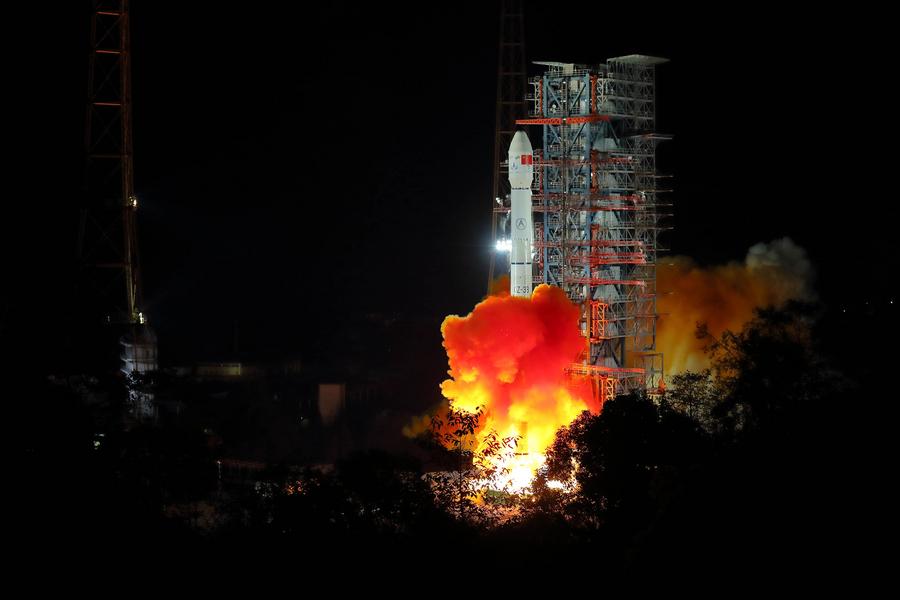Chang'e 4 mission prepares for far side of the moon landing
 0 Comment(s)
0 Comment(s) Print
Print E-mail China Daily, January 2, 2019
E-mail China Daily, January 2, 2019
Mankind's first explorer on the moon's far side soon will land on its destination, according to a schedule published by its developer.

The Chang'e 4 robotic probe is expected to land on the South Pole–Aitken basin on the silver sphere's far side sometime between Wednesday and Thursday, according to information from China Aerospace Science and Technology Corp, a major contractor of the country's lunar exploration programs.
The State-owned conglomerate previously said that the spacecraft would fly 26 days before landing on the lunar surface.
Chang'e 4 was lifted atop a Long March 3B carrier rocket on Dec 8 at the Xichang Satellite Launch Center in Southwest China's Sichuan province to fulfill the world's first expedition on a lunar region that never faces the Earth.
Tidal forces on Earth slow the moon's rotation to the point where the same side always faces Earth. The other side, most of which is never visible from Earth, is the far side of the moon. Though the far side has been extensively photographed by spacecraft, starting with a Soviet probe in 1959, no probe had ever made a soft-landing onto it, so scientists around the world have yet to be able to conduct close observations and surveys.
The probe entered an elliptical lunar orbit, ranging from 15 kilometers to about 100 kilometers above the moon, on Sunday morning to make the final preparation for landing.
The Chang'e 4 mission will allow scientists to discover what they don't about the moon. They also can take advantage of the far side's shield against Earth's interference to make clearer observations into deep space, scientists involved in the program expect.
Chang'e 4 consists of two parts – a lander and a rover, and the two carry multiple scientific instruments. It was designed based on its predecessor, the Chang'e 3, with some modifications.
In addition to Chinese scientific equipment, the mission also involves scientific apparatus developed by the Netherlands, Sweden, Germany and Saudi Arabia.
In May, China launched a relay satellite tasked with transmitting signals between Chang'e 4 and ground control.






Go to Forum >>0 Comment(s)